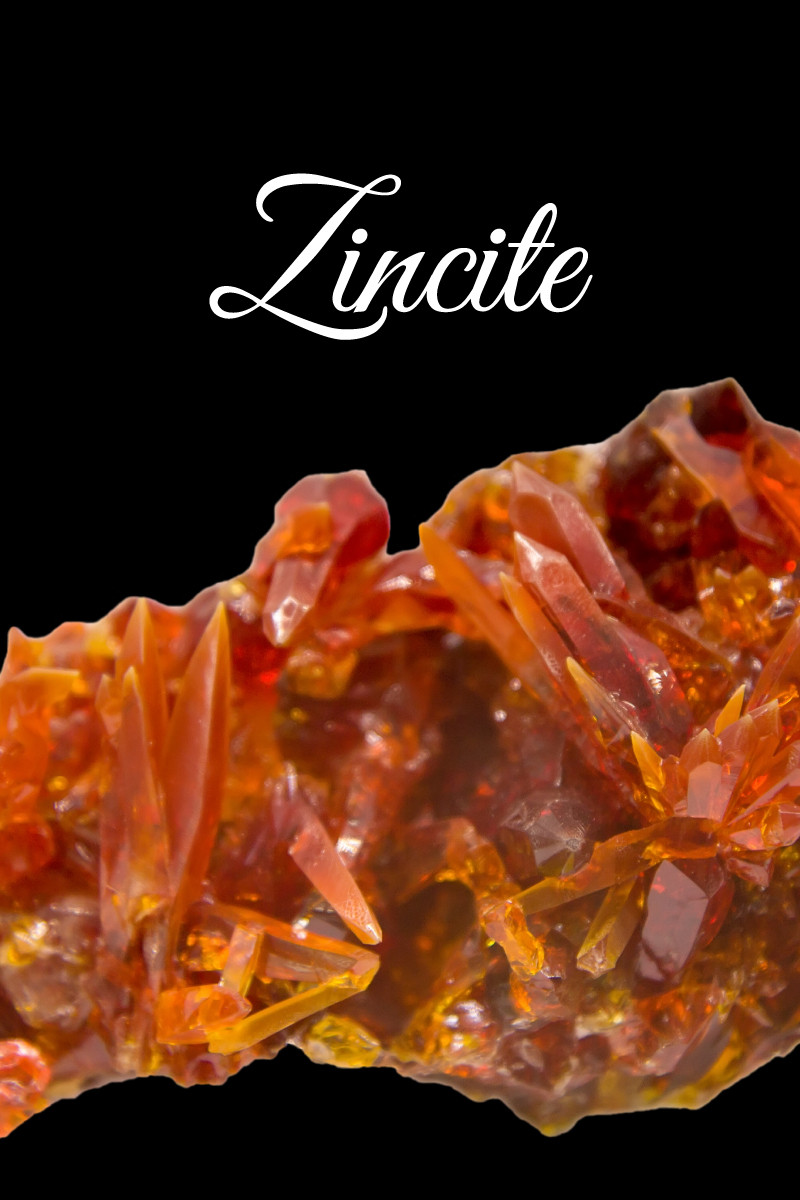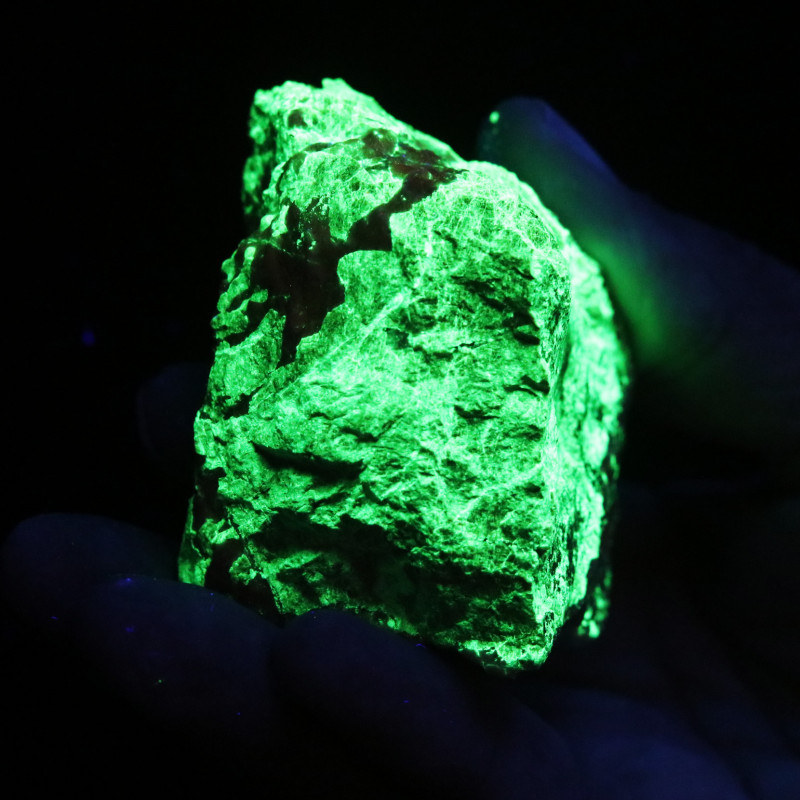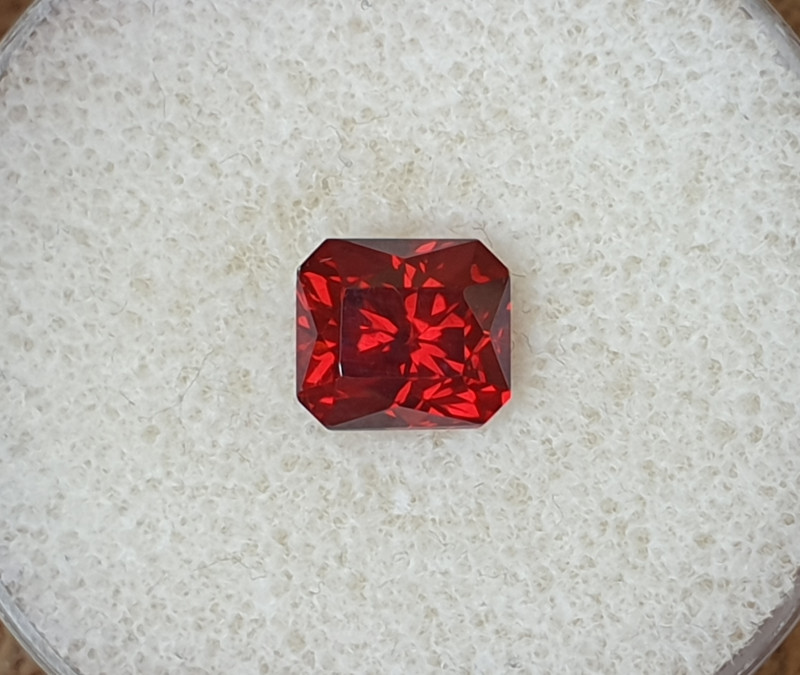
ジンサイト宝石:特性、意味、価値情報ガイド
 ジンサイトは、秋らしい色合いを持つ酸化亜鉛の宝石です。天然の宝石品質の結晶はほぼアメリカ、特にニュージャージー州産です。天然の結晶は小さく希少であるため、市場に出回っているジンサイト宝石のほとんどは合成です。
ジンサイトは、秋らしい色合いを持つ酸化亜鉛の宝石です。天然の宝石品質の結晶はほぼアメリカ、特にニュージャージー州産です。天然の結晶は小さく希少であるため、市場に出回っているジンサイト宝石のほとんどは合成です。
ジンサイトは希少鉱物ですか?天然ジンサイトは、ニュージャージー州の鉱床を除いて非常に希少です。また、宝石にカットするのも難しいため、ファセットカットされたジンサイトは特に希少です。幸いなことに、合成ジンサイトが登場したことで、この美しい石の市場は大きく広がりました。
ジンカイトの色は?純粋なジンカイトは無色ですが、稀にしか見られません。ジンカイトは独特の鮮やかなオレンジ色や深紅色で知られていますが、黄色や茶色、稀に緑色など、秋の色合いを呈することもあります。
もっと詳しく知りたいですか?ぜひ一緒に、亜鉛鉱石の意味、治癒特性、用途など、あらゆる情報を発見してください。

ジンサイト石について
ジンサイトは、独特の性質を持つ半貴石です。占星術的には、天秤座と牡牛座の星座石です。興味深いことに、ジンサイトは月の鉱物でもあり、1976年にソ連のルナ24号探査機によって最後の月探査ミッションで持ち帰られました。
この鉱物は、時代とともにさまざまな名前で呼ばれてきました。たとえば、
赤色亜鉛鉱石/酸化物
亜鉛の赤色酸化物
カルコジンサイト
スターリンガイト
スパルタライト
アパルタリテ
アンクラマイト
ブルーサイト
ルビー亜鉛
ジンサイトは硫化亜鉛の宝石である閃亜鉛鉱によく似ており、「ルビージンク」という呼び名は閃亜鉛鉱の一般的な愛称として知られているかもしれません。しかし、「ルビージンク」はニュージャージー州におけるジンサイト(亜鉛鉱)の愛称でもあります。
閃亜鉛鉱も最も重要な亜鉛鉱石ですが、亜鉛鉱石は亜鉛の鉱石なのでしょうか?はい!これは、宝石の世界以外での多くの用途の一つに過ぎません。
亜鉛鉱石の用途
ニュージャージー州フランクリン産のジンサイトは、精製された酸化亜鉛のマイナー鉱石です。鉱山で最も亜鉛含有量が多い鉱物であるにもかかわらず、最も希少な鉱石です。
もう一つの用途は日焼け止めです。FDA承認の日焼け止め成分17種類の中でも、亜鉛鉱は特別な成分です。有害なUVAとUVBを含むすべての紫外線を遮断し、敏感肌にも害を与えません。亜鉛鉱の最適な含有量は10~25%です。
最後に、亜鉛鉱石結晶(天然および合成)は歴史的に、無線信号を復元または識別するための鉱石ラジオの半導体検出器として使用されてきました。
鉱物の観点から見ると、亜鉛鉱は何からできていますか?
亜鉛鉱石の仕様と特性
純粋な亜鉛鉱の化学式はZnOですが、マンガン不純物が非常に多く含まれるため、化学式はZnO + Mnと表記されることが多いです。実際、亜鉛鉱には1~7%の酸化マンガンが含まれることがあります。鉄不純物もよく見られます。
ジンサイト結晶は半結晶性で、端と端で結晶構造が異なり、多くの場合、一方は尖っていて、もう一方は平らです。小さな結晶には、水平の条線(平行で凹んだ溝)が入ったピラミッド面(平らな側面)もあります。また、歪んだり腐食したりすることもあります。
結晶は稀なので、通常は粒状または葉状の塊状のジンサイトが見られます。また、表面が粗く、エッチングされたような質感を持つドゥルージー状のジンサイトも見られます。
亜鉛鉱の特性は何ですか?以下ですべてご確認ください。
モース硬度:4~4.5
色: 通常は濃い赤または明るいオレンジ色。無色、黄色、赤褐色、緑色の場合もあります。
結晶構造:六方晶
光沢:亜ダイヤモンド状からダイヤモンド状、または樹脂状
透明性:透明から不透明、通常は半透明
屈折率:2.01~2.03
密度:5.64~5.69
分裂:[1010]では完全な一方向だが困難。[0001]では基底分裂
骨折:貝殻状、貝殻下状、または不均一
縞模様:オレンジイエロー
発光: 非常に稀に蛍光を発し、SW-UV では黄色に発色します。ニュージャージー産の鉱物の中には、他の鉱物と混合したものもあり、SW-UV では黄緑、黄色、黄橙色、またはオレンジ色に発色します。
多色性:時々存在するが非常に弱い、体色の2つの色合い
亜鉛鉱に蛍光を発する鉱物は何でしょうか?詳しくは続きをお読みください。
 上の写真:紫外線下のウィレマイトと方解石の標本
上の写真:紫外線下のウィレマイトと方解石の標本
亜鉛鉱の種類:合成および混合
亜鉛鉱自体には種類はありませんが、合成亜鉛鉱と、フランクリン石と方解石が混ざった亜鉛鉱という 2 つの注目すべき種類があります。
合成亜鉛鉱については、「宝石の特性」セクションでさらに詳しく説明します。
アメリカ合衆国ニュージャージー州フランクリンでは、亜鉛鉱の形成過程において、フランクリナイト、方解石、ウィレマイトなどと混ざり合うことがよくあります。フランクリナイト、ウィレマイト、そして亜鉛鉱は、この鉱山で最も重要な亜鉛含有鉱石です。
他の 3 つについても簡単に説明します。
フランクリナイト:不透明な黒色の酸化亜鉛鉄、金属光沢を持つことが多い
方解石:ほぼすべての色で強い蛍光を発する白色炭酸カルシウム。縞模様の場合は複数の色になることもある。
ウィレマイト:典型的には白色または緑黄色の亜鉛ケイ酸塩で、強い緑色の蛍光を発し、時には強い燐光を発する。
亜鉛鉱がこれらの鉱物と混ざると、通常は白色方解石(マトリックス)を基質とし、その周囲にフランクリン石と亜鉛鉱の斑点が見られます。これらの標本には、ウィレマイトも含まれることがあります。
このガイドでこれらの石について言及する場合、それを「混合亜鉛鉱」と呼びます。
亜鉛鉱の最も一般的な形態は、ウィレマイトまたはフランクリン石鉱石の粒界結晶であり、2 つ以上のより大きな異なる結晶の間に挟まれていることを意味します。
鉱物の特性は?確認しました。しかし、亜鉛鉱石の形而上学的特性はどうでしょうか?

亜鉛鉱石の意味と歴史
ジンサイトは、回復力、回復力、そして独創性を象徴しています。また、友情や共通の目的に向かって努力する絆も表しています。
「ジンサイト」という名前は、その亜鉛の組成に由来しています。(驚きですよね?)「ジンク」という言葉は、おそらく「爪」を意味するドイツ語のzinkに由来しています。しかし、「ジンサイト」は、この石の最初の名前ではありませんでした。
アメリカの鉱物学者アーチボルド・ブルースは1810年、アメリカ合衆国ニュージャージー州で亜鉛鉱を発見し、最初の鉱物学的記述を残しました。ブルースはこの石を「亜鉛の赤色酸化物」と名付けました。また別のアメリカの鉱物学者フランシス・アルジャーは1844年にこの石を「スターリンジャイト」と名付けました。
「ジンサイト」という名称は、1845年にオーストリアの鉱物学者ヴィルヘルム・ハイディンガーによって提唱されました。その後、1852年に「スパルタライト」、1861年に「ルビージンク」など、様々な名称が付けられましたが、「ジンサイト」という名称は定着しました。
それから1世紀以上経った1980年代、ポーランドはアメリカ市場に向けて、宝石品質の合成ジンサイト(亜鉛鉱)を発表しました。このジンサイトは、酸化亜鉛粉末の製造過程で副産物として偶然に生成されました。その後、他の企業もこの製法を模倣し、より手頃な価格のジンサイト宝石を市場に投入しました。
クリスタルヒーリングの世界では、亜鉛鉱は何に使われますか?

亜鉛鉱石の治癒特性
天然ジンサイトと合成ジンサイトはどちらもヒーリングストーンとして利用でき、その色彩に由来する力があります。例えば、レッドジンサイトは他の赤い宝石と同様に、身に着ける人を元気づけ、強くする力を持っています。
一方、オレンジジンサイトのようなオレンジ色の宝石は、創造性と勇気を高めることで知られています。これらのクリスタルは、創造性の中心である太陽神経叢チャクラと、グラウンディングの中心であるルートチャクラのチャクラストーンでもあります。
亜鉛鉱結晶の身体的および感情的な利点についてはどう思いますか?
身体の治癒
ジンサイトクリスタルのスピリチュアルな意味と同様に、この石には体力とエネルギーを回復させる治癒力があるとされています。また、運動習慣を維持するのにも役立つと言われています。
感情的な癒し
感情面では、ジンサイトは内なる平和をもたらし、感情のバランスを整えると信じられています。クリスタルヒーラーは、願望を叶えるためにジンサイトを使った瞑想を推奨しています。
このクリスタルは、あなた自身の固有の目的を見つけ、それを受け入れ、恐れることなくそれを追求するのを助けてくれます。人間関係においては、ジンサイトは健全で真の友情を育む力を与えてくれます。
ヒーリング効果のあるジンサイトクリスタルの販売を考えてみませんか?次に注目すべき価値要因をチェックしてみましょう!

ジンサイト宝石の特性
専門家は希少性に加え、色、カット、透明度、カラット重量に基づいてジンサイトの価値を判断します。合成ジンサイトについても後述します。
色
オレンジ色または赤色が最も一般的ですが、ジンサイトは茶色がかった赤、黄橙色、そして稀に緑色など、様々な色合いを示すことがあります。黄色のジンサイトも希少ですが、 分散性(虹色の輝き、または「ファイア」)が最も優れています。
細粒のジンサイトは一般的に色が薄く、微細な亀裂のあるジンサイトは一般的に濃い(しかし鈍い)色合いを示します。合成ジンサイトは天然ジンサイトとほぼ同様の色調ですが、通常は明るい色です。
天然ジンサイト(亜鉛鉱)の色は、マンガン、鉄、またはその両方の不純物に由来します。ニッケルは緑色の発色を引き起こします。合成ジンサイト(亜鉛鉱)の色の発生源は不明です。米国宝石学研究所(GIA)の研究者は、色は不純物ではなく、内部構造の要因に由来する可能性があると考えています。
カット
硬度が低く、劈開が完全なため、ジンサイトはカットが難しく、ファセットカットされたジンサイトは非常に稀少です。それでも、宝石職人は、放射状、正方形、または長方形のクッションファセット形状を選ぶことが多いです。
多くの場合、原石のまま、またはカボションカットされて販売されます。最も見た目が美しく(そして最も一般的な)カボションは、亜鉛鉱にフランクリナイト、方解石、ウィレマイトが混ざったものです。
明瞭さ
ジンカイトのクラリティ(目に見える内包物の数)は低いため、ほとんどの石は半透明または曇ったように見えます。天然石によく見られる内包物は、黒色のヘテロライトまたはフランクリナイトです。
ポーランド産の合成ジンサイトには、興味深い「オタマジャクシのような」楕円形の包有物が研究者によって発見されています。これらは製造工程で発生した煤や炭素ガス(二酸化炭素とメタン)である可能性が高いと考えられます。
カラット重量とサイズ
形状の良い既知の亜鉛鉱結晶は、いずれも大きさが4インチ(約10cm)にしか達しません。一方、塊状の亜鉛鉱は数ポンドにも達することがあります。
カットされたジンサイトは、ファセットカットされたものは1~3カラットがほとんどですが、最大のものは20カラットに達します。ニュージャージー産のジンサイトカボションは、300カラット近くになることもあります。
合成繊維
ジンサイト宝石のほとんどは合成です。つまり、人工的に作られたものですが、天然のものと組成と構造は同じです。これらの結晶は、亜鉛精錬の副産物である場合もあれば、意図的に研究室で育成された場合もあります。
合成ジンサイト(透明度の項で説明)の内部に見られる内包物は、実験室で生成されたものよりも副産物として多く見られます。実験室で生成されるジンサイトの製造には、蒸着法、水熱法、チョクラルスキー法などの技術が用いられます。

亜鉛鉱石の形成と産地
亜鉛鉱は、岩石中に一次鉱物(岩石の形成時に形成される)または二次鉱物(風化または変質により後に形成される)として形成されます。
一次亜鉛鉱は、変成(変質)した亜鉛鉱体または石灰岩中に形成されます。変成した亜鉛に富む鉱床には、硫化鉱石の酸化によって形成された二次亜鉛鉱も酸化領域に含まれています。
ニュージャージー州における亜鉛鉱の形成プロセスについては、科学者たちは完全には解明していません。多くの科学者は、亜鉛、マンガン、鉄を含む炭酸塩岩が脱炭酸反応(高温高圧による変質)を起こすことで、一次亜鉛鉱が形成されると考えています。
ウィレマイトが蛇紋岩化作用(化学反応による低温変化)を受けると、二次的な亜鉛鉱が形成されると考える人もいます。
そうは言っても、亜鉛鉱はどこで見つかるのでしょうか?
採掘場所
ご存知の通り、ニュージャージー州(アメリカ合衆国)は世界で最も豊富な亜鉛鉱(ジンサイト)鉱山があることで有名です。ニュージャージー州にはフランクリン鉱山とスターリングヒル鉱山という2つの重要な鉱山があり、どちらも蛍光鉱物(ジンサイト単体では蛍光を発しませんが)が豊富にあることで広く知られています。
さらに、亜鉛鉱の小さな粒子が以下の場所でも発見されています。
アリゾナ州、米国
コンゴ
ナミビア
スペイン
タスマニア
ワシントン州、米国
ポーランドは合成亜鉛鉱の最初の生産国であり、現在でも主要な供給源となっています。
販売中の亜鉛鉱を購入する準備はできましたか?それでは価格についてお話ししましょう!

亜鉛鉱石の価格と価値
カラットあたりの価格についてお話しする際には、ジンサイトは非常に密度が高いため、カラット数が多くても石のサイズが小さいことが多いことにご留意ください。参考までに、1カラットのジンサイトは1カラットのダイヤモンドの約半分の大きさです。
天然ジンサイトは希少性が高いため、合成ジンサイトよりも高価です。天然ファセットカットのジンサイト宝石は卸売価格で1カラットあたり40~65ドルですが、合成ファセットカットのジンサイトは1カラットあたり約10ドルです。
ジンサイトカボション(混合されていないもの)は1カラットあたり約23ドルです。混合ジンサイトカボションは通常1個あたり5~10ドルです。ジンサイト原石または結晶クラスターは、1カラットあたり0.20~2.50ドルが一般的です。
ジュエリーは高価になることもあり、ジンクサイトクリスタルのネックレスは 30 ドルから 170 ドルの範囲です。
ジンカイトのお手入れとメンテナンス
ジンサイト宝石の適切なお手入れは、まず傷つきにくいジュエリーを選ぶことから始まります。ペンダントやイヤリングは傷つきにくく、指輪には保護セッティングが施されているものがよいでしょう。
ジンサイトは丁寧に扱い、水とできれば中性洗剤で洗ってください。石は熱から遠ざけ、他の宝石とは別に涼しい場所に保管してください。
ジンカイトの回復力を吸収しましょう!
ジンサイトは、その効能と同じくらい多くの名前を持つ、希少な宝石です。合成ジンサイトが現代に発明されたことで、この美しい石はより身近なものとなり、予算に合わせて様々な選択肢が選べるようになりました。
一年を通して季節の再生と豊かさをもたらす秋の色合いの宝石をお探しなら、亜鉛鉱はあなたにぴったりの石です。
Gemstone Encyclopedia検索
最新記事
ヤシ象牙彫刻は、植物象牙とも呼ばれ、南米のヤシ科植物フィテレファス属のヤシの実から倫理的に採取された、象牙の天然代替品です。このガイドでヤシ象牙についてすべて学びましょう!
15th Jan 2026
レインボーラティスサンストーンは、様々な内包物によって3つのゴージャスな光学的効果を持つ長石の一種です。燃えるように鮮やかな色合いと格子模様が、コレクターにとって希少な宝石となっています。
12th Jan 2026
記事のカテゴリ
How To's is where you will find helpful articles from gem Rock Auctions on how to cut gemstones, select gemstones and buy gemstones.
9記事数

